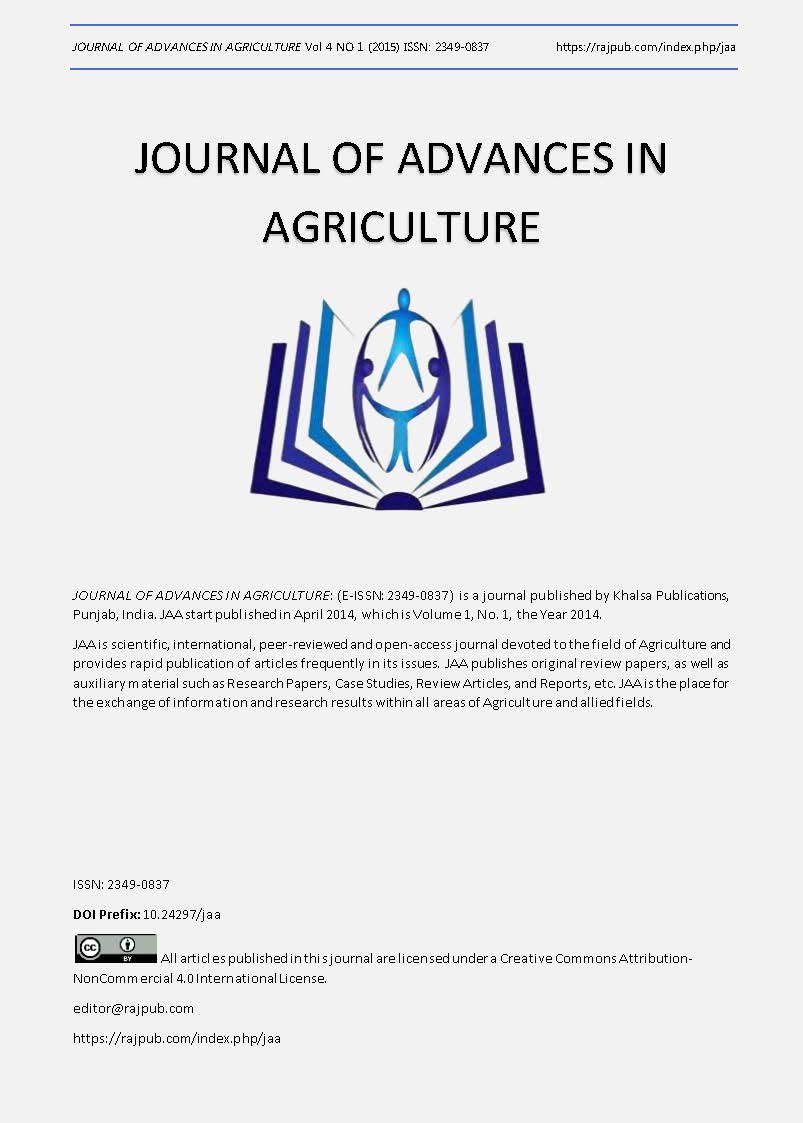Dry matter, Free Sugar and Starch Changes in Tuber Regions of White Yam (Dioscorea rotundata Poir.), and the Effect of Storage Environment
DOI:
https://doi.org/10.24297/jaa.v4i1.4298Keywords:
Dioscorea rotundata, tuber regions, dry matter, free sugar starch, dark storage, light storageAbstract
This study was conducted to determine the changes in dry matter (DM), free sugar (FS) and starch contents in the three yam (D. rotundata) tuber regions under two storage environmental conditions (natural light- yam barn, or and darkness). Three varieties of D. rotundata (alaako, Dodoro and Odo) were studied. The dry matter content of the Head region was the highest (28.6%), followed by the Middle (26.9%) and Tail (22.3%) regions. Change in dry matter content of the tuber is mainly due to rapid changes in the dry matter content of the Tail region over time. Storage environment significantly (P< 0.05) affected dry matter content of the three tuber regions at 8 and 16 weeks in storage (WIS). Head regions per variety were lower in dry matter when stored under Light than in the Dark at 8 WIS, while the reverse was the case for the Tail. This may relate to the release of endodormancy. By 16 WIS, when tubers stored under Light had well developed sprouts and those stored in the Dark only showed the first sign of sprouting, all Head regions had higher dry matter content under Light than in Dark storage. This may be due to the presence of sprouts. Storage environment did not significantly affect starch content at the various tuber regions. Head regions had higher percentage free sugar content under Light than Dark storage, and these effects were manifested between 8 and 16 WIS.Downloads
Download data is not yet available.
Downloads
Published
2015-04-08
How to Cite
Hamadina, E. (2015). Dry matter, Free Sugar and Starch Changes in Tuber Regions of White Yam (Dioscorea rotundata Poir.), and the Effect of Storage Environment. JOURNAL OF ADVANCES IN AGRICULTURE, 4(1), 303–309. https://doi.org/10.24297/jaa.v4i1.4298
Issue
Section
Articles
License
 All articles published in Journal of Advances in Linguistics are licensed under a Creative Commons Attribution 4.0 International License.
All articles published in Journal of Advances in Linguistics are licensed under a Creative Commons Attribution 4.0 International License.




